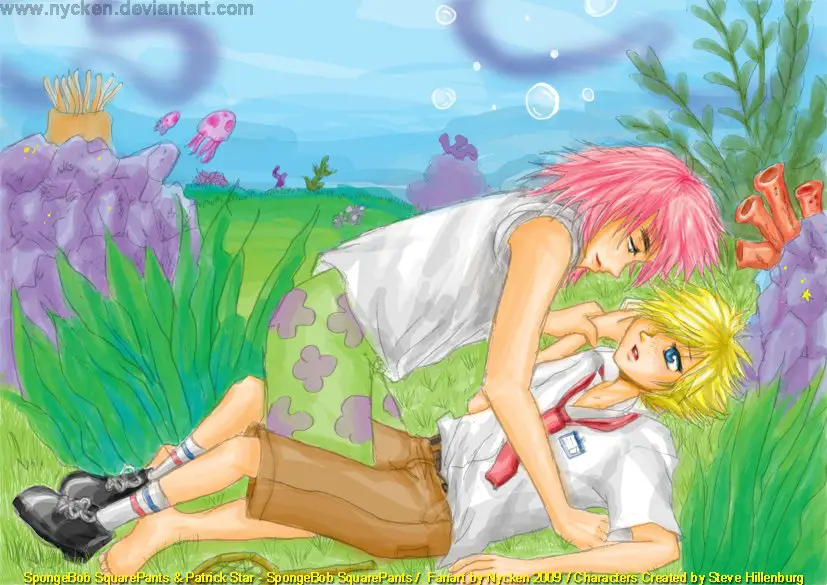Wherever there are hints of sexual tension in a book, movie or television show, there will always be shippers. They can be described as uber-fans who pair or ‘ship’ two fictional characters together in a romantic relationship, and then obsess over that mental image becoming a reality. Many shippers draw saucy fan art, write sultry fanfic, and at times freak out when their ship doesn’t pan out.
Shippers have been in the headlines in the past years for driving a few prominent creatives off social media due to shipping-related harassment. A WB exec was hounded over a Supernatural ship not happening and an artist for Steven Universe deleted her account because of abuse.
The shippers are a strange and complex breed. At its worst shipping can lead to campaigns of targeted harassment against art creators. At its best it can be a movement promoting gay acceptance and visibility in media. But mostly it’s just a bunch of people on the Internet enjoying the thing they love, albeit in strangely erotic ways.

A history
Where did this subculture originate? The term itself comes from the fandom of the X-Files where online discussion of the show was segregated between the “relationshippers,” those who wanted Mulder and Scully to bang, and general plot-related topics.
But shipping culture is probably as old as storytelling itself. No doubt some ancient shipper finished the bible, threw it on the ground and screamed in anger at the heavens that her Jesus/Mary Magdalene ship didn’t happen.
A less speculative start to modern shipping grew out of the Star Trek fandom. Fans of the original series had a penchant for shipping Kirk and Spock in what is known as slash fic, or the pairing of two same-sex characters who are straight in the cannon denoted by a “/.” Reams of pornographic fan fic and art was produced in honor of the love that would never appear on screen.

The Kirk/Spock fans created a division seen in many fandoms of subtext vs anti-subtext. Those who believe in “subtext” see subtle hints in the show to prove a sexual relationship between Kirk and Spock. Anything from prolonged eye contact to charged physical contact bolsters the subtext narrative. In 1985 a Star Trek novel Killing Time was recalled from shelves by series creator Gene Roddenberry because it contained elements of Kirk/Spock slash fiction.
The rationalization for those on the anti-subtext side could be anything from anti-gay bigotry to a respect for the original creators’ intentions. In the novelization for Star Trek: The Motion Picture, the author rebutted the subtexters in a footnote written from the perspective of Kirk.
I was never aware of this ‘lovers’ rumor, although I have been told that Spock encountered it several times. Apparently, he had always dismissed it with his characteristic lifting of his right eyebrow, which usually connoted some combination of surprise, disbelief, and/or annoyance. As for myself… I have always found my best gratification in that creature called woman. Also, I would not like to be thought of as being so foolish that I would select a love partner who came into sexual heat only once every seven years.
These subtexter v. anti-subtexter “shipping wars” got even more heated in the 90s inside the Xena: Warrior Princess fandom. Xena quickly became a lesbian icon, and the subtext faction of the fandom became committed to the idea of a romantic relationship between the warrior princess and her sidekick Gabrielle. Parts of the online fandom became hostile.
Cathy Young wrote on the issue 10 years ago:
In a way, knowing that the staff paid attention to fan opinions may have made matters worse: There was an incentive for the rival groups to out-shout one another to make themselves heard. Many fans who had no appetite for these wars fled the online fandom. Story lines that were seen as betraying the subtext, particularly the Xena-Ares relationship in the fifth season, were met with intense hostility from a small but vocal group; at other times, non-subtext fans grumbled about what they saw as pandering to the pro-subtext fan base (such as several sixth-season episodes emphasizing Xena and Gabrielle’s transcendent bond as soul mates)

Shipwrecks
“Shipwrecks” (when an event in the show or book makes the ship impossible) are too difficult for some shippers to bear. This is when an overzealous fandom can get a bit harass-y. WB exec Chad Kenny, who worked on the show Supernatural, made the mistake on Twitter of saying that a much-hyped gay relationship between the angel Castiel and Dean Winchester (Destiel) would never happen in the show.
Supernatural has a proportionately high number of queer fans who felt “queer baited” by all the heavily homoerotic subtext in the show, and they let Kenny have it on Twitter.
https://twitter.com/sparkleshudson/status/392885926059589632
After Kenny quit Twitter, Destiel shippers got a bad reputation from WB. A Supernatural super fan, who organized a gift-giving campaign for the cast and crew, was banned from conventions allegedly for being a Destiel shipper.

Shipping IRL
Some shippers don’t simply want their characters shipped—they want the actors to share the romance in real life. This is a huge problem in the Outlander fandom, as fans who unironically refer to themselves as “Truthers” believe that the show’s stars, Caitriona Balfe and Sam Heughan, are secretly dating in real life despite the actors openly stating they only share a platonic friendship.
While Outlander fandom mainly comprises middle-aged women, there are a few outliers. Namely William Shatner. He decided to enter the shipping war, as he felt that Balfe and Heughan were being bullied by the IRL shippers.
https://twitter.com/WilliamShatner/status/740714797944037376
Shatner began taking screenshots of tweets by Cait/Sam shippers that he felt were harassment. The shippers felt that by doing this, Shatner was siccing his 2 million+ followers on them. Shatner and Heughan are in their own IRL platonic relationship, and fans grew angry at Heughan for not condemning what they saw as harassment by Shatner.
CW’s popular superhero show Arrow has its own case of IRL shippers. The “Olicity” shippers want so desperately for costars Emily Bett Rickards and Stephen Amell to be a thing that they will photoshop Rickards into pictures of Amell and his wife. They will take any subtle bit of gossip as proof that Amell will leave his wife, who they refer to as “Voldy.”

Anti-shippers
Some people just don’t believe true love will always triumph, and like to make their opinion known on the Internet. Anti-shippers could either be people who oppose a particular “ship” or those who hate shipping culture altogether. Some anti-shippers believe that certain ships promotes pedophilia and domestic abuse (not completely unfounded accusations, as some people actually ship Rick with his grandson Morty).

Whole blogs on Tumblr are devoted to fighting against shipping or against anti-shippers.
Conclusion
Whelp, there ya go. Shipping culture is really weird. But isn’t everything online? To hate on people that just want to see two fictional characters f—k is counterproductive. Instead we should celebrate these proud subculture by gaping in awe at all the beautiful sexy fan art they create. Here, have some more:

And more:

 Tip Your Landlord Shirt $21.68 |
 |
 Tip Your Landlord Shirt $21.68 |

